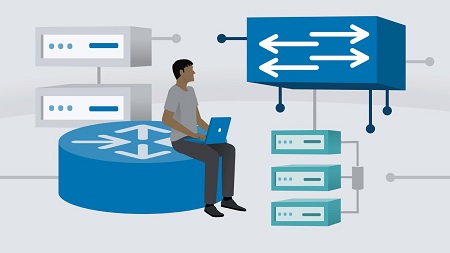
English | MP4 | AVC 1280×720 | AAC 48KHz 2ch | 1h 50m | 298 MB
Do you need to learn how to support and maintain Cisco networks? In this course, Kevin Wallace shows you the basics you need to master, including concepts, components, cabling, and more. Kevin gives you an overview of a network, its benefits, and some day-to-day examples. He shows you the OSI model and the TCP/IP model, as well as some common network layer protocols, common transport layer protocols, a TCP three-way handshake, and application layer protocols and port numbers. Kevin explains why collision avoidance is important and how CSMA/CD and CSMA/CA help. He goes over hubs, switches, routers, wireless access points, and more. Kevin discusses network cabling, including copper cables, fiber cables, transceivers, and straight-through cables vs. crossover cables. Kevin guides you through Cisco router and Catalyst switch configuration, then concludes with some useful next steps.
Table of Contents
Introduction
1 Learn the fundamentals of Cisco networking
2 What this course is about
3 How to get hands-on practice
Network Basics
4 Overview of a network
5 Benefits of a network
6 Day-to-day network examples
7 OSI model
8 TCPIP model
9 Common network layer protocols
10 Common transport layer protocols
11 TCP three-way handshake
12 Application layer protocols and port numbers
Network Concepts and Components
13 CSMACD vs. CSMACA
14 Hubs and switches
15 Routers
16 Collision and broadcast domains
17 Wireless access points (APs)
18 Firewalls
19 Intrusion detection and prevention systems
20 Examples of network topologies
21 Mesh topologies
Network Cabling
22 Copper cables
23 Fiber cables
24 Transceivers
25 Straight-through vs. crossover cables
Cisco Router and Catalyst Switch Configuration
26 Cisco routers and Catalyst Switch Ports
27 Cisco Internetwork Operating System (IOS)
28 Basic Cisco IOS commands
29 Secure Cisco devices with passwords
30 Configure a router interface
31 Work with configuration files
Conclusion
32 Next steps
Resolve the captcha to access the links!